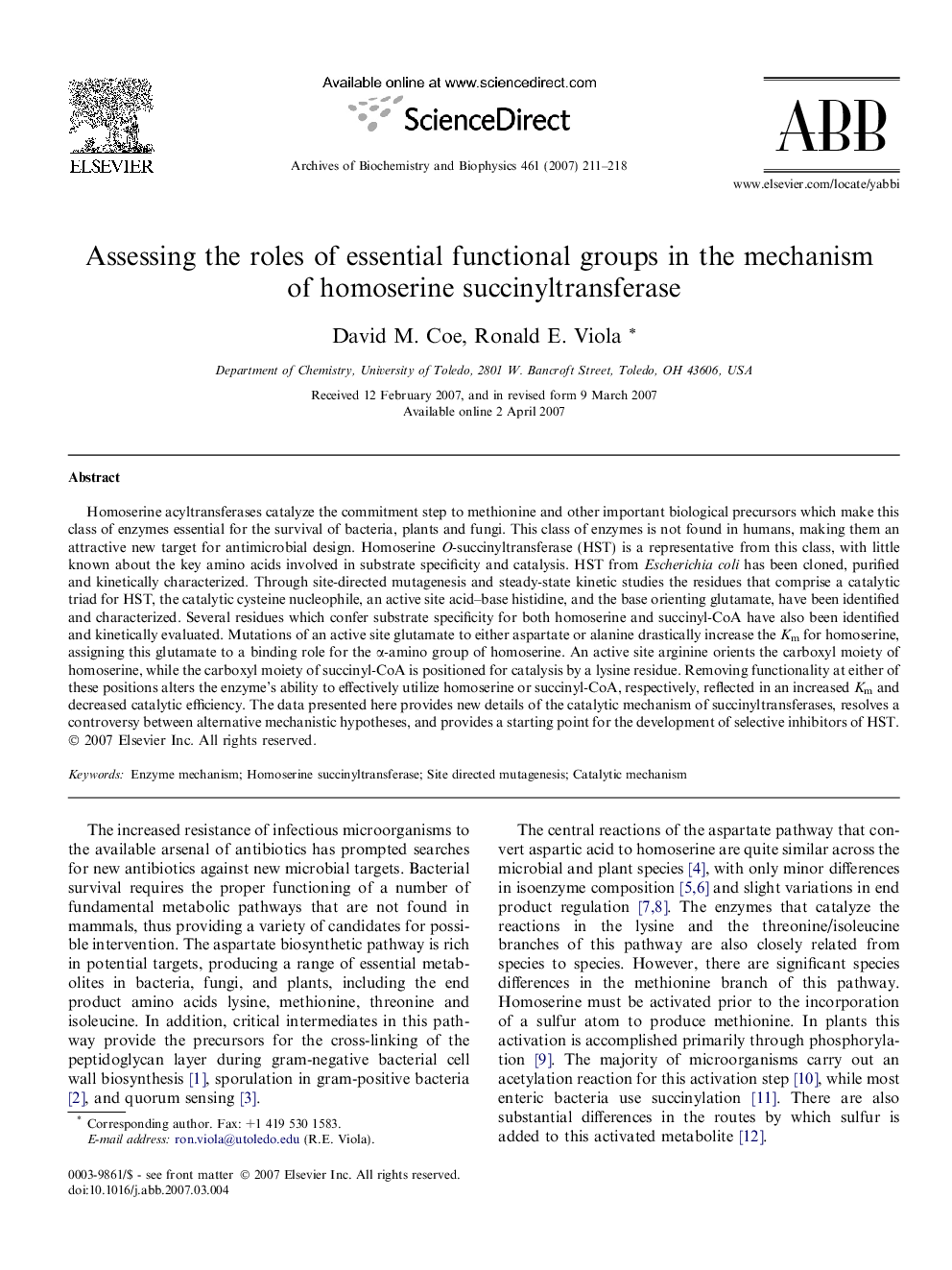| Article ID | Journal | Published Year | Pages | File Type |
|---|---|---|---|---|
| 1927176 | Archives of Biochemistry and Biophysics | 2007 | 8 Pages |
Homoserine acyltransferases catalyze the commitment step to methionine and other important biological precursors which make this class of enzymes essential for the survival of bacteria, plants and fungi. This class of enzymes is not found in humans, making them an attractive new target for antimicrobial design. Homoserine O-succinyltransferase (HST) is a representative from this class, with little known about the key amino acids involved in substrate specificity and catalysis. HST from Escherichia coli has been cloned, purified and kinetically characterized. Through site-directed mutagenesis and steady-state kinetic studies the residues that comprise a catalytic triad for HST, the catalytic cysteine nucleophile, an active site acid–base histidine, and the base orienting glutamate, have been identified and characterized. Several residues which confer substrate specificity for both homoserine and succinyl-CoA have also been identified and kinetically evaluated. Mutations of an active site glutamate to either aspartate or alanine drastically increase the Km for homoserine, assigning this glutamate to a binding role for the α-amino group of homoserine. An active site arginine orients the carboxyl moiety of homoserine, while the carboxyl moiety of succinyl-CoA is positioned for catalysis by a lysine residue. Removing functionality at either of these positions alters the enzyme’s ability to effectively utilize homoserine or succinyl-CoA, respectively, reflected in an increased Km and decreased catalytic efficiency. The data presented here provides new details of the catalytic mechanism of succinyltransferases, resolves a controversy between alternative mechanistic hypotheses, and provides a starting point for the development of selective inhibitors of HST.
